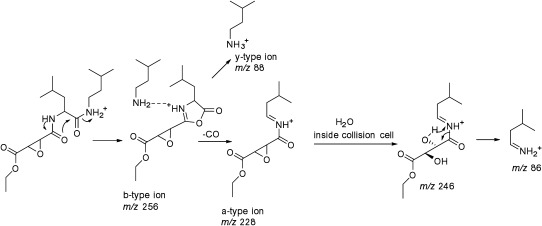Fig. 4. Proposed mechanism for formation of major ions in the tandem mass spectrum of aloxistatin. The ion of m/z 256 representing b-type fragment was not shown in the challenge data and it was a minor fragment in the Q-TOF instrument. The b-ion is likely held in a protonated dimer form with the neutral amine (C5H13N) from which hydrogen transfer can occur to form a y-type of m/z 88. This diagnostic ion was observed in the Q-TOF instrument but was not part of the challenge data. The a-type ion can be attacked by water present in the collision cell to produce ion of m/z 246.

